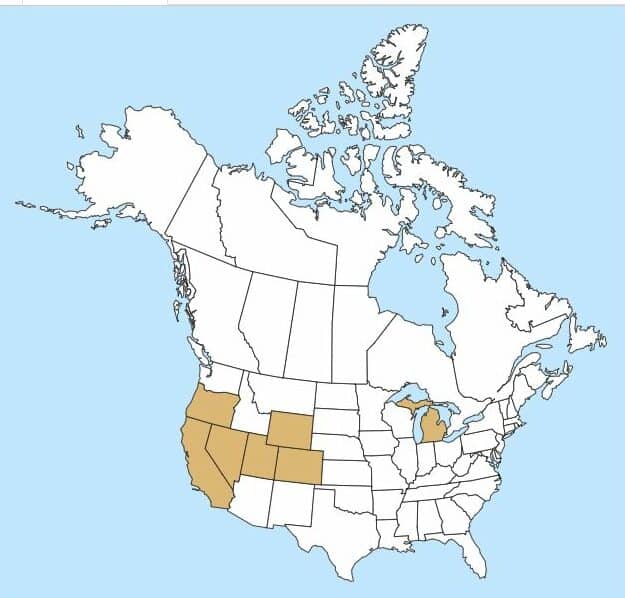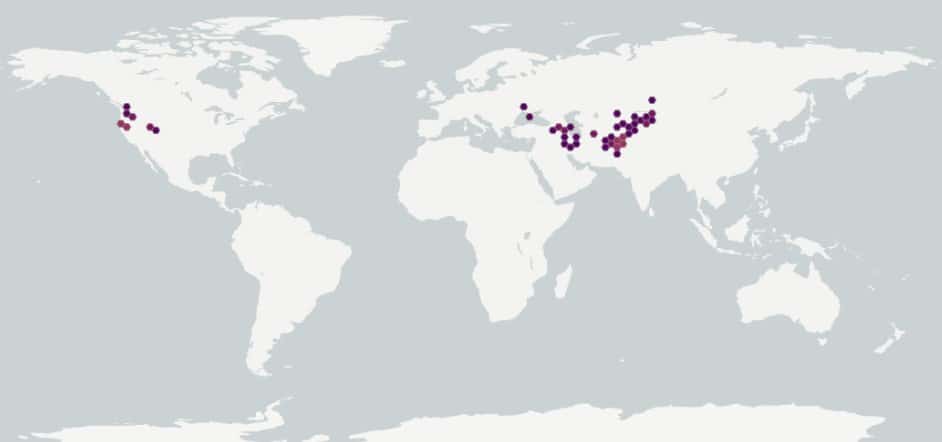Centaurea virgata subsp. squarrosa
Overview
Aperçu
Regulation :
Remarques Réglementation:
- CFIA Weed Seeds Order - Class 1: Prohibited Noxious Weed Seeds
- USA Federal Noxious Weed Seed List
Regulation Notes:
Prohibited Noxious, Class 1 in the Canadian Weed Seeds Order (2016) under the Seeds Act. All imported and domestic seed must be free of Prohibited Noxious weed seeds.
Distribution :
Répartition :
Native to temperate Asia and introduced in the United States (Colorado, California, Michigan, Nevada, Oregon, Utah, Wyoming) (DiTomaso and Healy 2007; USDA-ARS 2020). Absent from Canada (Brouillet et al. 2010+).
Habitat and Crop Association :
Habitat et Cultures Associées :
Degraded rangelands, grasslands, open sites, logged areas, and roadsides (Cal-IPC 2020).
Economic Use, cultivation area, and Weed Association :
Utilisation économique, zone de culture et association de mauvaises herbes :
Duration of Life Cycle :
Durée du cycle vital:
Perennial
Dispersal Unit Type :
Type d’unité de dispersion :
Achene
General Information
RENSEIGNEMENTS GÉNÉRAUX
C. virgata subsp. squarrosa was accidently introduced into California in the 1930s with sheep ranching (Howell 1959). This species tolerates a wide range of temperatures and drought conditions, but does not tolerate cultivation or irrigation (Whitson et al. 1996).
Each flower head generally produces 1-5 viable achenes that can drop to the ground around the plant; the spiny bracts can also attach the flower heads to animals or vehicles for long-distance dispersal (Jensen et al. 2008).
.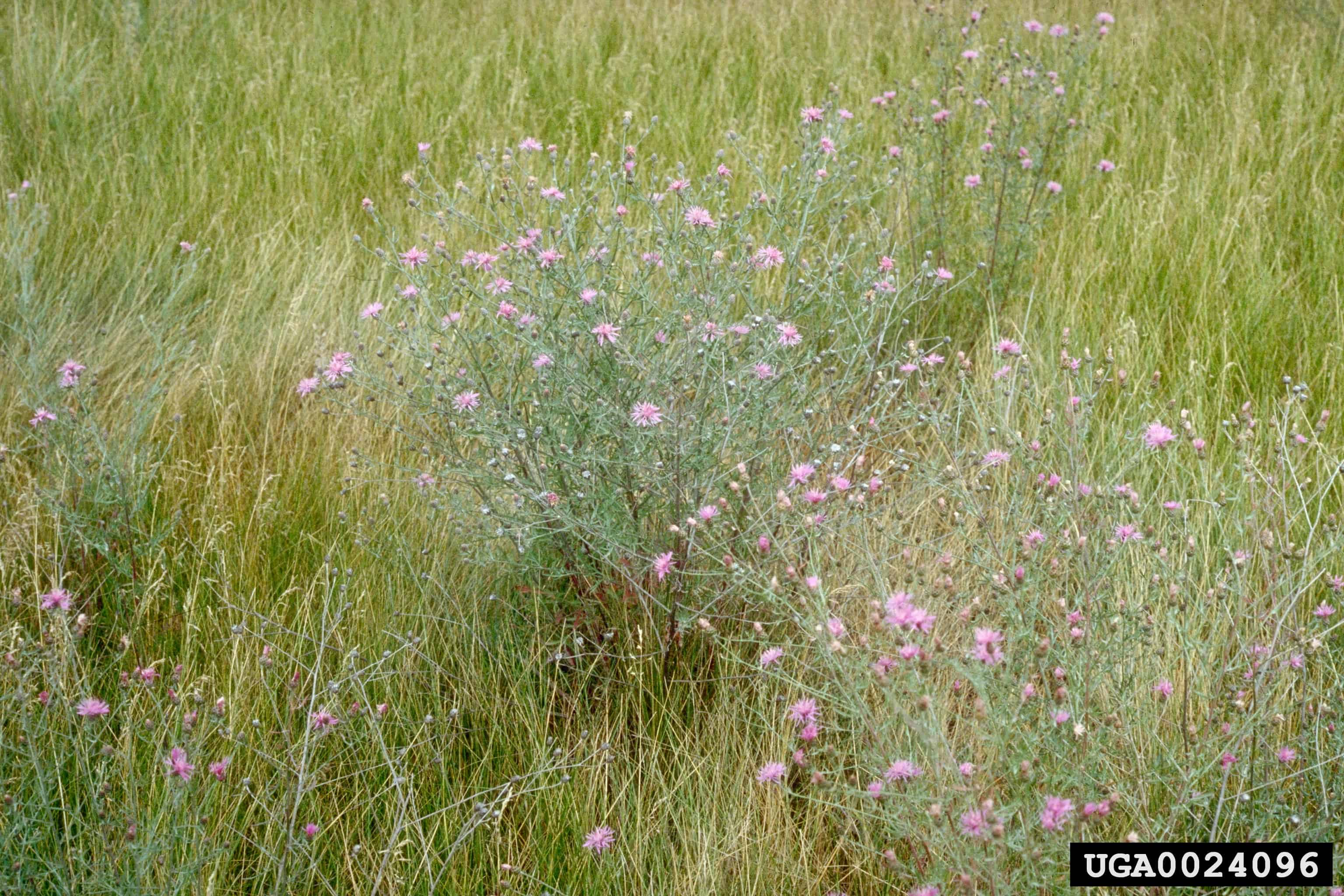
Centaurea virgata subsp. squarrosa plants (USDA-ARS , USDA Agricultural Research Service, Bugwood.org)
Identification
Identification
-
Achene
Size
- Achene length*: 2.6 – 3.5 mm; width: 1.2 – 1.8 mm
*Note: minimum and maximum of 10 achenes in a normal range of this species using image measurement (ISMA 2020)
Shape
- Achene is oblong with a narrow rounded notched end and a wider truncate end, strongly laterally compressed.
Surface Texture
- Achene surface is smooth
Colour
- Achene colour is often a shiny brown or dark greenish-brown with a thick central stripe and several thinner stripes on each side of the achene that are lighter than achene’s dominant colour
- Some achenes may be grey or dark brown
Other Features
Pappus
- Pappus length: 1.0 – 2.5 mm (FNA 1993+)
- Pappus may be less than 1.0 mm in length in some achenes (FNA 1993+)
Achene end with pappus
- A small style remnant is present in the center of the truncate end
- The rim at the truncate end with style remnant is generally lighter in colour than achene’s dominant colour, but in some the colour is the same
Achene end without pappus
- Side notch is small and shallow relative to the overall achene size
- The area around side notch is usually lighter in colour than the achene’s dominant colour
- Notch appears diamond shaped in achene profile view
- Tissue (elaiosome) is generally present in the notch, but may be removed during processing
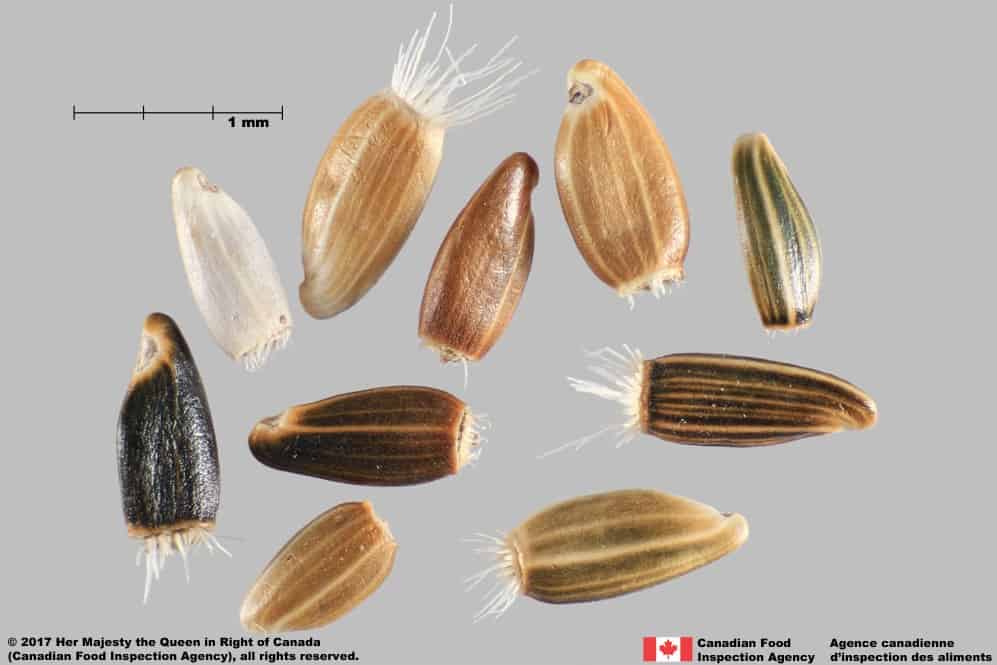
Squarrose knapweed (Centaurea virgata subsp. squarrosa) achenes

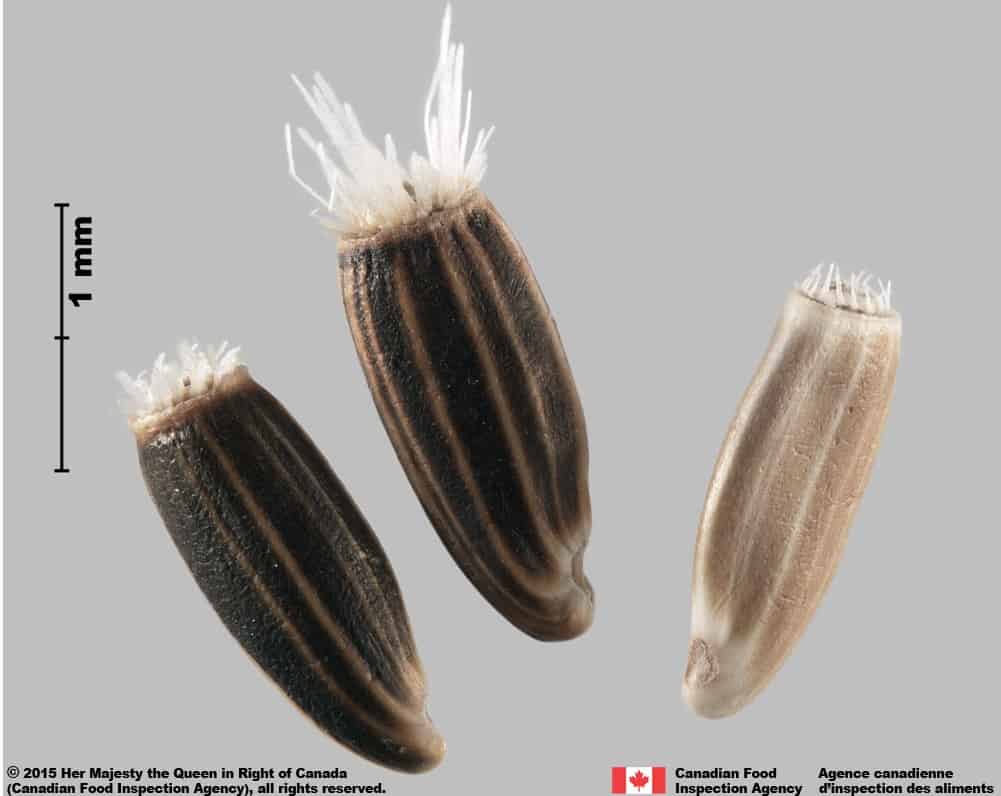
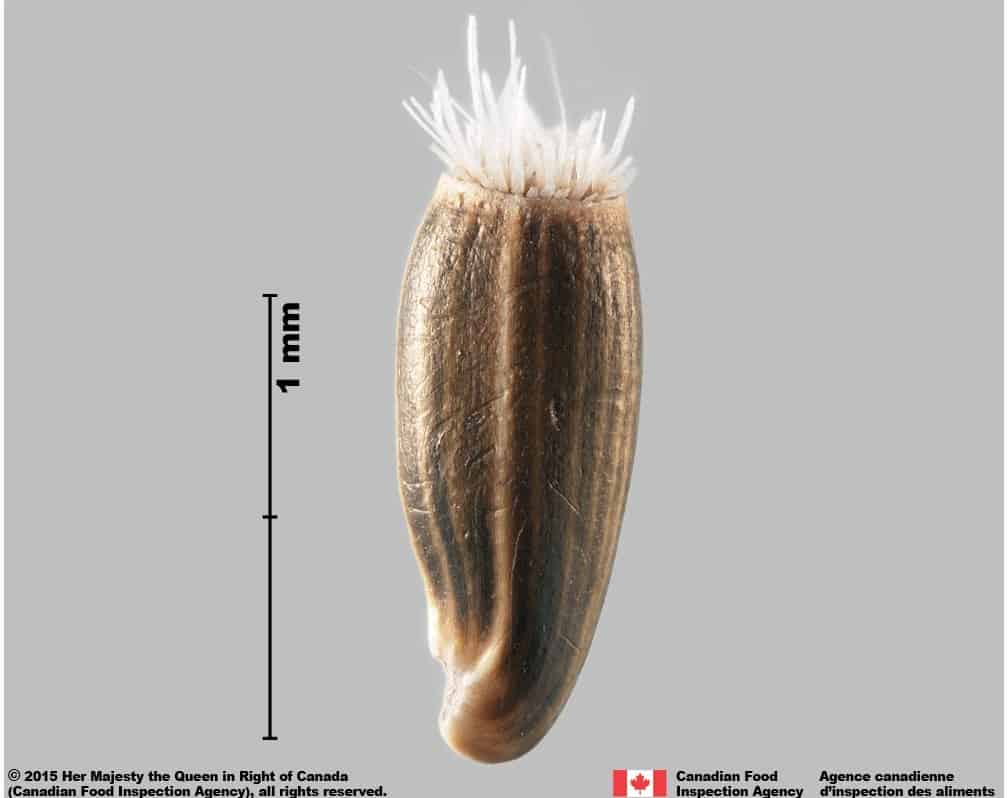
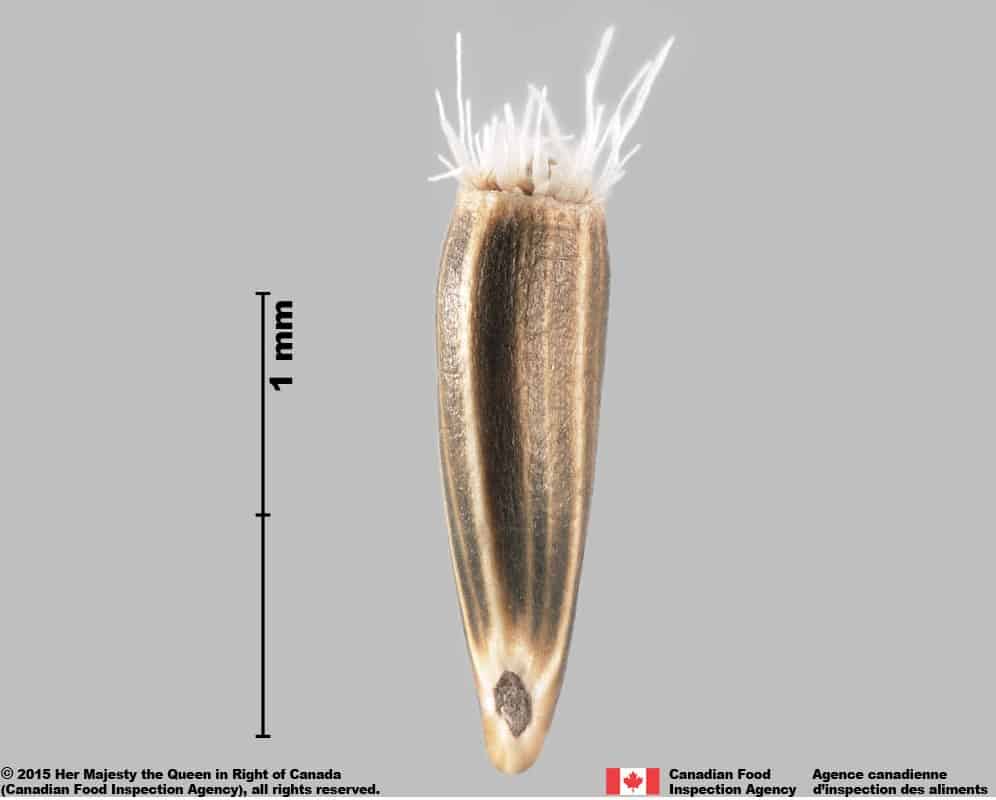
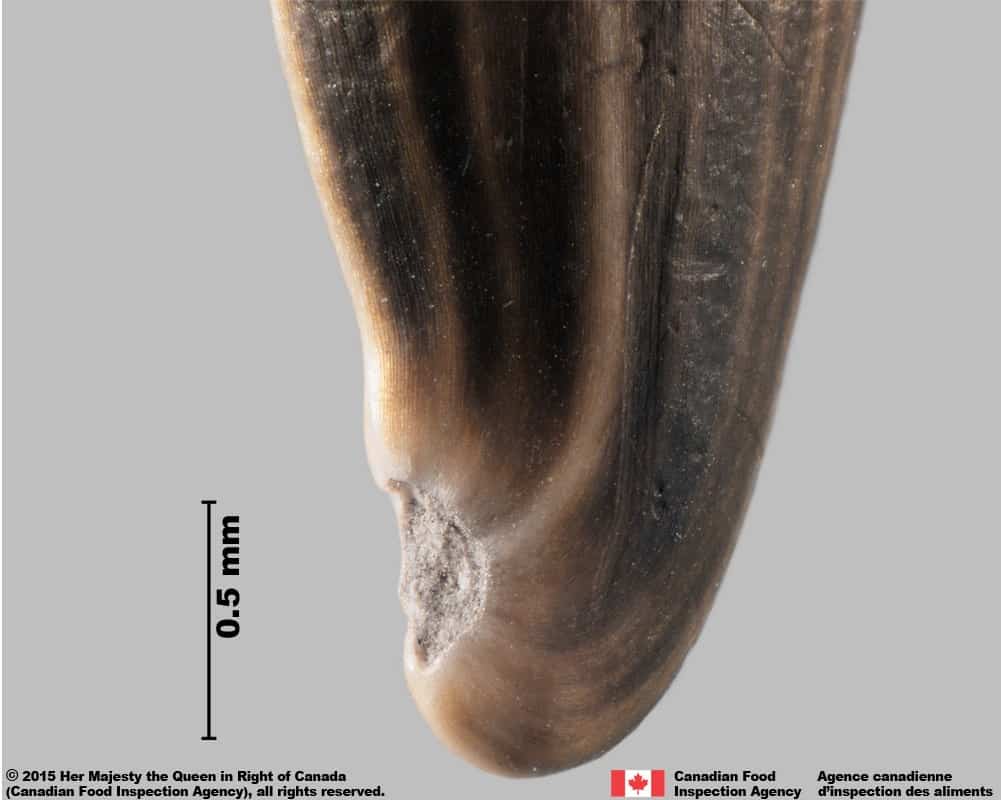
-
Seed
Size
- Seed size similar to achene size
Shape
- Seed shape is oblong with one end narrow
Surface Texture
- Seed surface is smooth
Colour
- Seed is light yellow coloured
Other Features
- Seed coat thin, brown, adhering to the fruit wall
-
Embryo
Size
- The embryo fills the seed
Shape
- Embryo is spatulate, axial position
Endosperm
- Endosperm absent, nutritive tissue stored in the cotyledons
Other Features
- Cotyledons are fleshy and soft-textured
Identification Tips
CONSEILS POUR L’IDENTIFICATION
C. virgata subsp. squarrosa achenes can be distinguished from similar species by their relatively large size, prominent light coloured stripes, shining surface, strong lateral compression and short, sparse pappus.

Squarrose knapweed (Centaurea virgata subsp. squarrosa) achenes





Additional Botany Information
AUTRES RENSEIGNEMENTS BOTANIQUES
Flowers/Inflorescence
- Flower heads narrow oval shaped or cylindrical, flowers pink or light purple (FNA 1993+)
- The flower heads are easily removed from the plant when the achenes are mature (Jensen et al. 2008)
- Involucral bracts are egg- or teardrop-shaped with scattered resin glands, the edges have small spines and each tipped with a large, recurved spine (FNA 1993+)
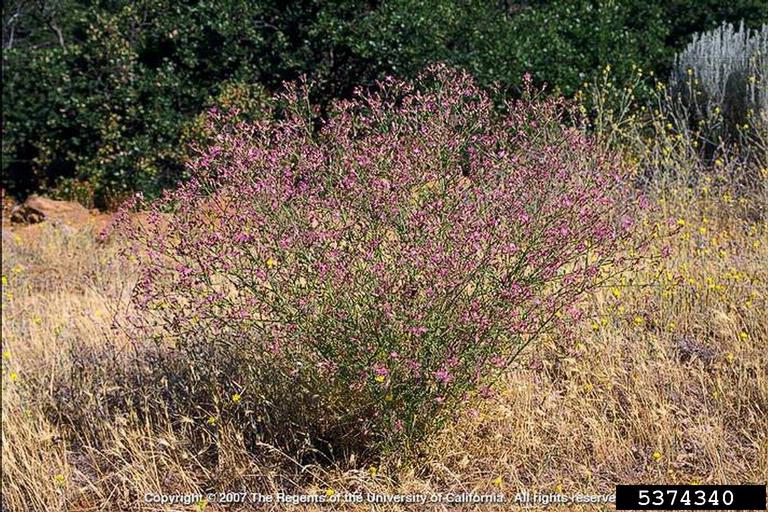
Centaurea virgata subsp. squarrosa plant in flower (Joseph M. DiTomaso, University of California – Davis, Bugwood.org)

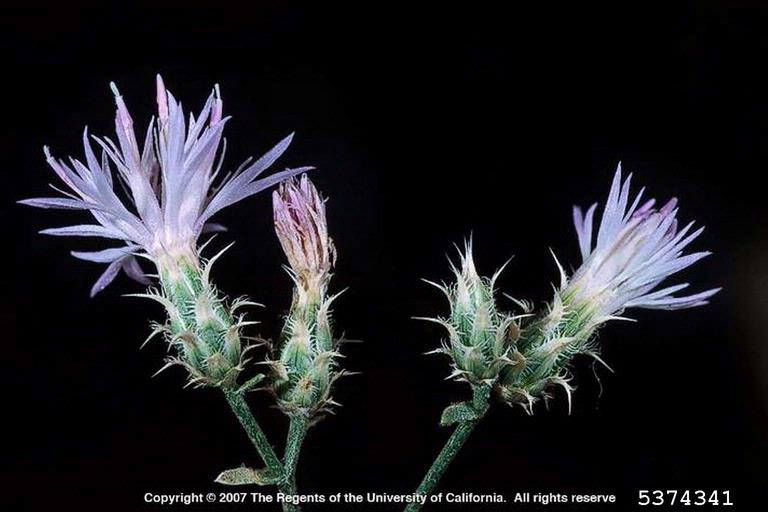
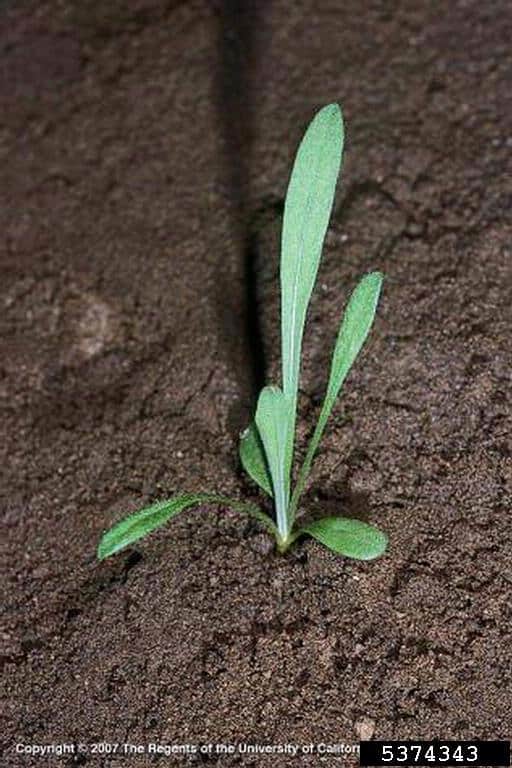
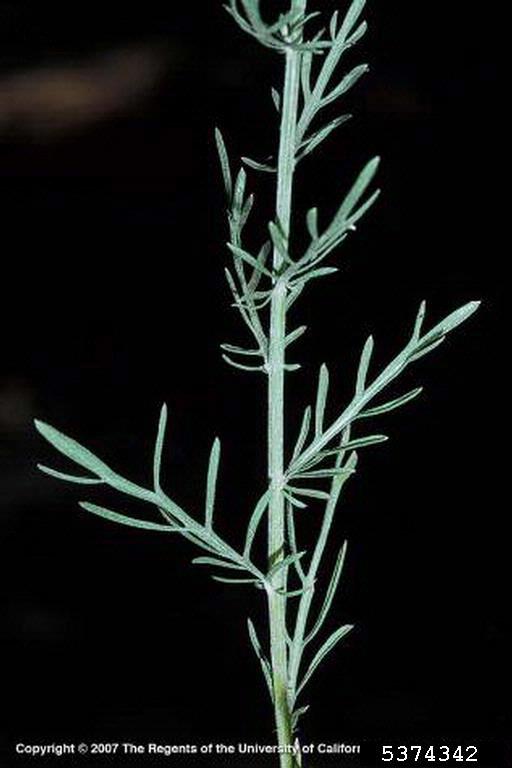
Similar Species
ESPÈCES SEMBLABLES
Similar species are based on a study of seed morphology of various species, and those with similar dispersal units are identified. The study is limited by physical specimen and literature availability at the time of examination, and possibly impacted by the subjectivity of the authors based on their knowledge and experience. Providing similar species information for seed identification is to make users aware of similarities that could possibly result in misidentification.
Centaurea stoebe L. (spotted knapweed)
C. stoebe achenes are generally smaller (length*: 1.8 – 3.1 mm; width: 0.8 – 1.3 mm), a more inflated shape in 3 dimensions, finer surface stripes, larger deeper side notch and a longer and more dense pappus (up to 5.0 mm long; FNA 1993+) than C. virgata subsp. squarrosa.
Centaurea diffusa L. (diffuse knapweed)
C. diffusa achenes are generally smaller (length*: 1.4 – 2.6 mm; width: 0.7 – 1.2 mm), a more inflated shape in 3 dimensions, a deeper side notch and a generally shorter pappus (up to 0.5 mm; FNA 1993+) than C. virgata subsp. squarrosa.
*Note: minimum and maximum of 20 achenes in a normal range of this species using image measurement (ISMA 2020)
Click to select species
Cliquez pour sélectionner les espèces
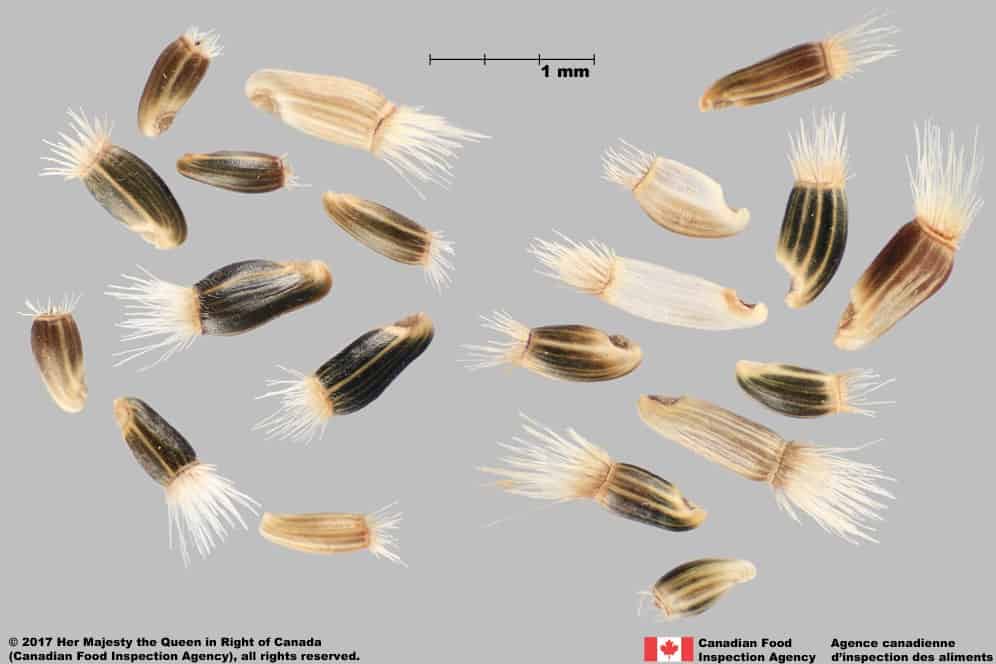
Centaurea stoebe
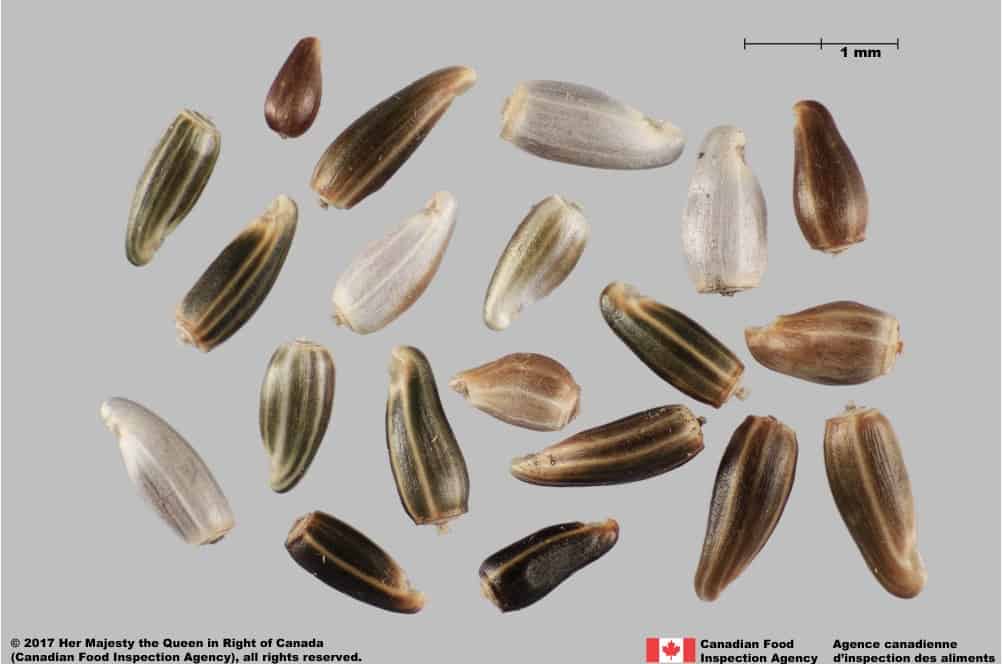
Centaurea diffusa
Comparison Window
Fenêtre de comparaison
MAIN SPECIES
ESPÈCES PRINCIPALES
Centaurea virgata subsp. squarrosa

Centaurea virgata subsp. squarrosa
Asteraceae
Squarrose knapweed (Centaurea virgata subsp. squarrosa) achenes
MAIN SPECIES
ESPÈCES PRINCIPALES
Centaurea virgata subsp. squarrosa

Centaurea virgata subsp. squarrosa
Asteraceae
Squarrose knapweed (Centaurea virgata subsp. squarrosa) achenes
MAIN SPECIES
ESPÈCES PRINCIPALES
Centaurea virgata subsp. squarrosa

Centaurea virgata subsp. squarrosa
Asteraceae
Squarrose knapweed (Centaurea virgata subsp. squarrosa) achene, side view
MAIN SPECIES
ESPÈCES PRINCIPALES
Centaurea virgata subsp. squarrosa

Centaurea virgata subsp. squarrosa
Asteraceae
Squarrose knapweed (Centaurea virgata subsp. squarrosa) achene
MAIN SPECIES
ESPÈCES PRINCIPALES
Centaurea virgata subsp. squarrosa

Centaurea virgata subsp. squarrosa
Asteraceae
Squarrose knapweed (Centaurea virgata subsp. squarrosa) achene, basal notch
SIMILAR SPECIES
ESPÈCES SEMBLABLES
Centaurea stoebe

Centaurea stoebe
Asteraceae
Spotted knapweed (Centaurea stoebe) achenes
SIMILAR SPECIES
ESPÈCES SEMBLABLES
Centaurea stoebe
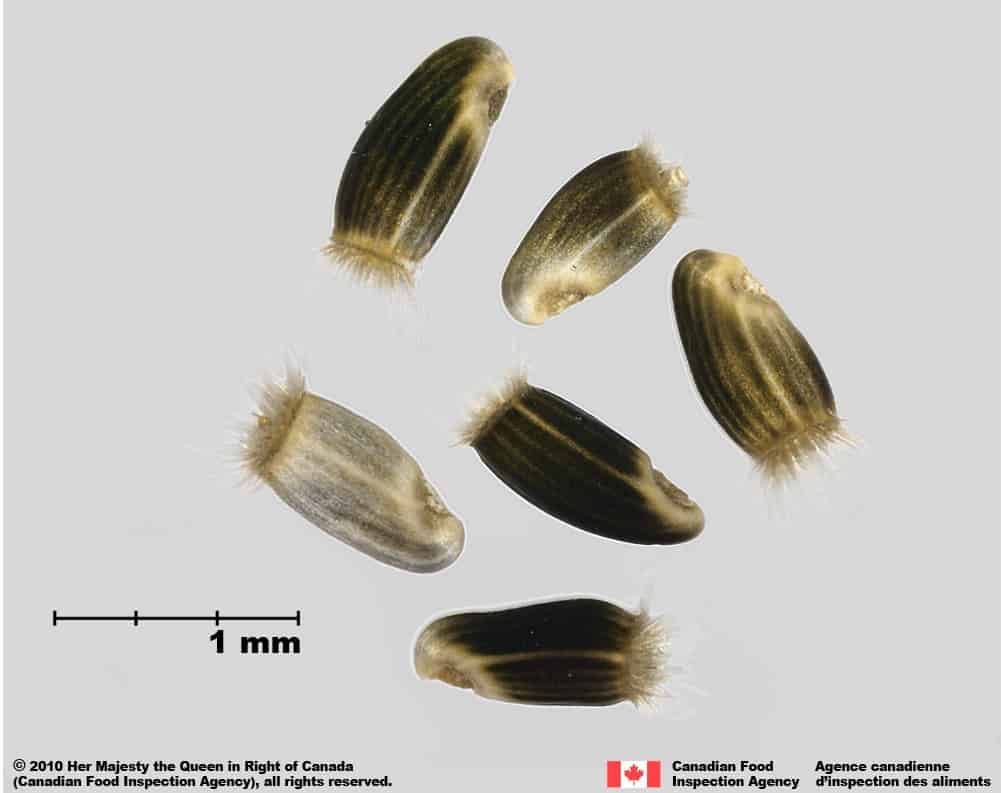
Centaurea stoebe
Asteraceae
Spotted knapweed (Centaurea stoebe) achenes
SIMILAR SPECIES
ESPÈCES SEMBLABLES
Centaurea stoebe
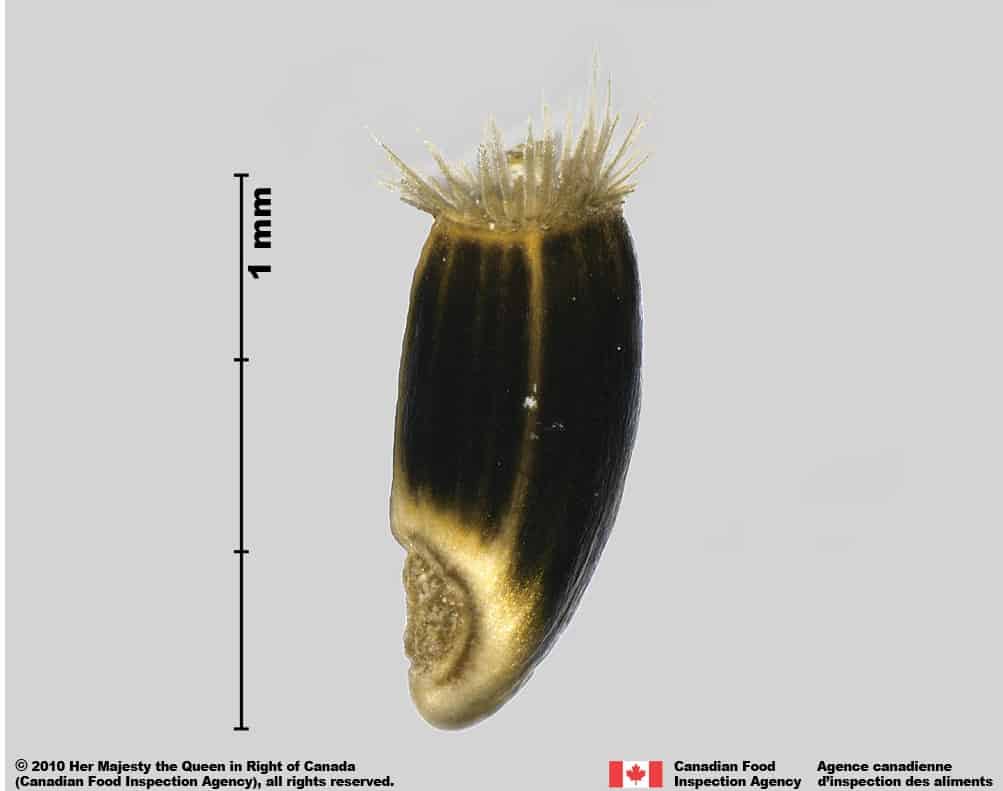
Centaurea stoebe
Asteraceae
Spotted knapweed (Centaurea stoebe) achene
SIMILAR SPECIES
ESPÈCES SEMBLABLES
Centaurea stoebe
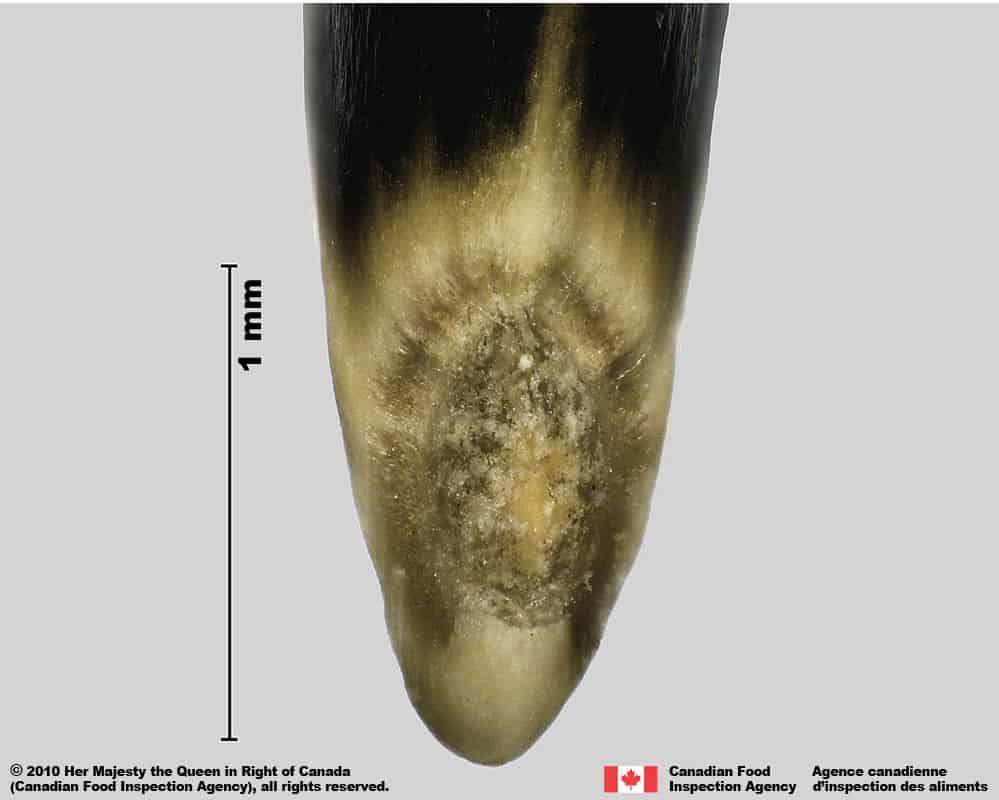
Centaurea stoebe
Asteraceae
Spotted knapweed (Centaurea stoebe) achene; basal notch
SIMILAR SPECIES
ESPÈCES SEMBLABLES
Centaurea stoebe
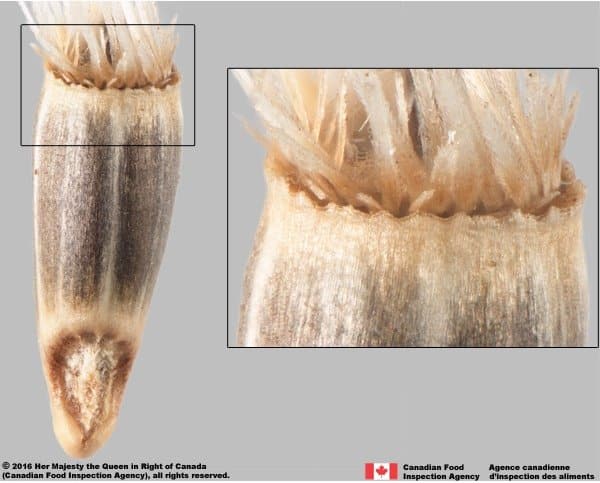
Centaurea stoebe
Asteraceae
Spotted knapweed (Centaurea stoebe) achene, close-up
SIMILAR SPECIES
ESPÈCES SEMBLABLES
Centaurea stoebe
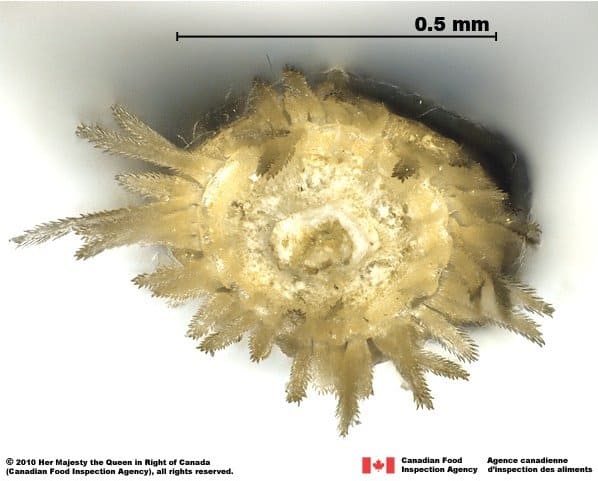
Centaurea stoebe
Asteraceae
Spotted knapweed (Centaurea stoebe) achene, top-down view
Need ID Help?
Besoin d’aide pour l’identification?
Reference(s)
Référence(s)
Brouillet, L., Coursol, F., Meades, S.J., Favreau, M., Anions, M., Bélisle, P. and Desmet, P. 2010+. VASCAN, the database of vascular plants of Canada. http://data.canadensys.net/vascan/ Accessed October 15, 2020.
Cal-IPC. 2020. Centaurea virgata var. squarrosa. California Invasive Plant Council, https://www.cal-ipc.org/plants/profile/centaurea-virgata-var-squarrosa-profile/ Accessed October 13, 2020.
DiTomaso, J. M. and Healy, E. A. 2007. Weeds of California and Other Western States. Vol. 1. 834 pp. University of California, CA.
Flora of North America (FNA) Editorial Committee, eds. 1993+. Flora of North America North of Mexico [Online]. 22+ vols. New York and Oxford. Accessed December 29, 2022.
Global Biodiversity Information Facility (GBIF) Secretariat. 2022. https://doi.org/10.15468/39omei Accessed via https://www.gbif.org/species/4274163 Accessed December 29, 2022.
Government of Canada (GC). 2016. Canadian Weed Seeds Order. https://laws-lois.justice.gc.ca/eng/regulations/SOR-2016-93/page-2.html (English) https://laws-lois.justice.gc.ca/fra/reglements/DORS-2016-93/page-2.html (French)
Howell, J. T. 1959. Distributional data on weedy thistles in western North America. Leaflets of Western Botany 9: 17-32.
International Seed Morphology Association (ISMA). 2020. Method for Seed Size Measurement. Version 1.0. ISMA Publication Guide.
Jensen, S.L., S.B. Monsen and Fosse, P. 2008. Spatial and Temporal Seed Dispersal of Squarrose Knapweed (Centaurea virgata Lam. spp. squarrosa (Willd.) Gugler) in West Central Utah, a Case Study. USDA Forest Service Proceedings RMRS-P-52.
Plants of the World Online (POWO). 2022. Facilitated by the Royal Botanic Gardens, Kew. Published on the Internet; http://www.plantsoftheworldonline.org/ Accessed April 29, 2022.
Tropicos. 2022. Missouri Botanical Garden. https://tropicos.org Accessed April 29, 2022.



